Situated on the edge of Lake Constance, Vorarlberg is the most Western state in Austria and offers a fine mix of culture and nature - hike in the morning, listen to Schubert in the afternoon and relax with opera on Lake Constance, in the evening.
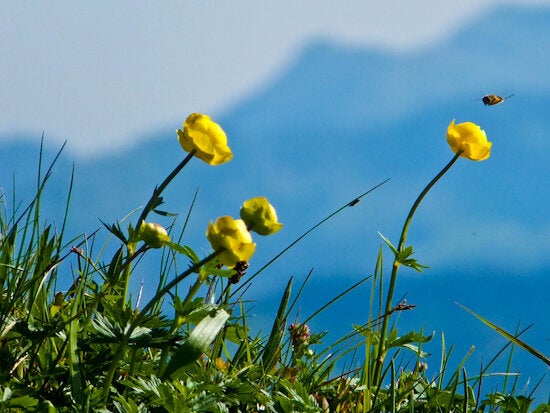
I've visited other parts of Austria but this is my first time in Vorarlberg and I get there by driving for around 90 minutes from Zurich airport. The region is hemmed in by Liechtenstein, Germany and Switzerland and many people take advantage by commuting over the borders. In a referendum held in 1919, at the end of WW1, the vote was to join Switzerland but this was vetoed by the Austrian government. Today Vorarlberg seems to punch above its weight, staging world beating opera and classical concerts, and putting up outstanding modern architecture. This certainly doesn't feel like the land of The Sound of Music.

Bregenz
Bregenz is the capital, on the Eastern shore of Lake Constance, although Dornbirn and Feldkirch, further inland, now have larger populations. The town has been busy reinventing itself in the last few years and, although the Vienna Symphony has been presenting opera here since the end of WW2, in the Bregenzer Festspiele, the stage on the lake gets larger and more elaborate every season. This year they are staging Mozart's Magic Flute and, of course you take your chances with the weather, but the situation on the water is outstanding and it's well worth the risk.
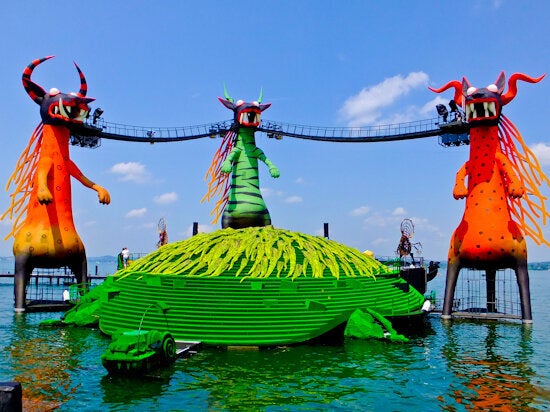
The Vorarlberg Museum has just reopened after a major rebuild, and this area, which includes the Kunsthaus Bregenz and the theatre, is the cultural heart of the town. Interactivity is the name of the game here and on the 4th floor there's a huge window giving a view of the lake and people, rather like a Victorian camera obscura.
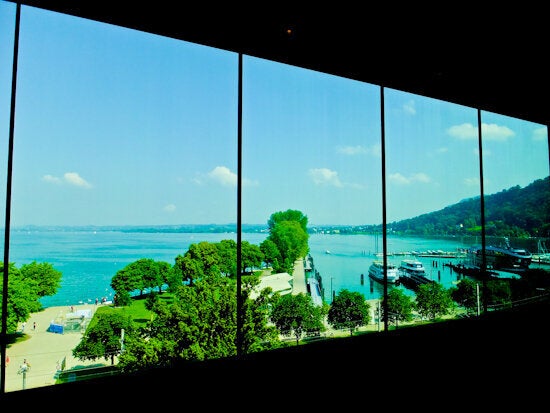
I also particularly enjoy the exhibition of colourful Nigerian clothing on the second floor, documenting Vorarlberg's fine tradition of what is known locally as "African lace". Since the 1960's, the Austrian textiles have been exported to West Africa where they're tailored into traditional attire for weddings and special occasions. It's an impressive display and a nice touch is the Nigerian sound track and collection of album sleeves.
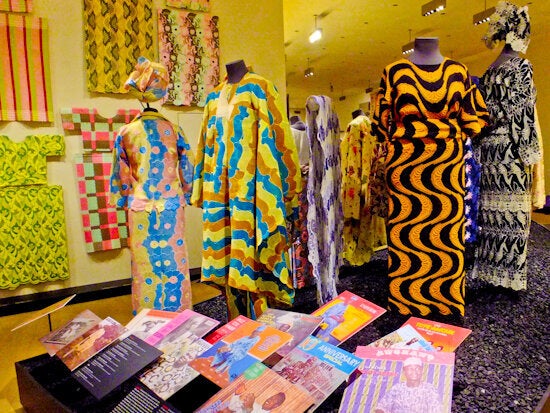
The Kunsthaus Bregenz was designed by the Swiss architect Peter Zumthor and is one of the world's leading contemporary art galleries. It's a striking structure and the facade consists of etched glass shingles, a clever design feature, as the interior is lit entirely by natural light, refracted rather than direct. Interestingly, there are no permanent exhibitions here, rather the whole space is given to one artist for a few months at a time. Now it's the turn of Mexican Gabriel Orozco and I'm privileged to be given a sneak peek, just me and the people working on the setup.

Rolls Royce
Examples of art of a more utilitarian sort are found in the Rolls-Royce Museum, the largest in the world, with around 70 vehicles, housed on 3 floors in an old textile mill in Dornbirn. The museum was set up in 1999 to house the Vonier family's collection, and apparently over 95% are still drivable. Indeed you can take a variety of them for a spin, but you'll need a chauffeur - they just don't trust you to bring it back. They're particularly proud of their 1924 Silver Ghost but all are outstanding examples of the craft.
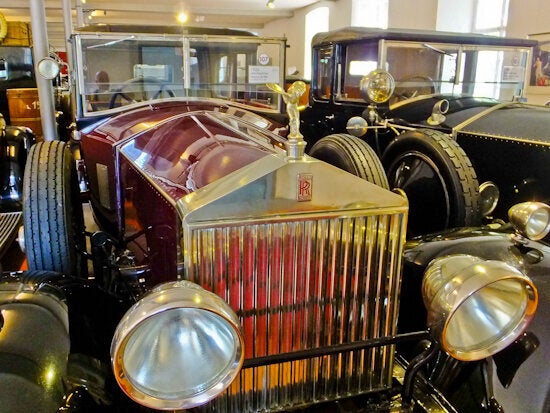
Feldkirch
Feldkirch is a beautifully preserved medieval town, right next to Liechtenstein, and, during the Middle Ages, occupied a strategic place on the trade route from Eastern Europe to Switzerland. The remnants of the walls, 4 towers and 2 gates are all that remain of the original fortifications and the centre is a warren of narrow lanes, half-timbered houses and elaborately decorated facades. In the 12th century, Count Hugo von Montfort built the Schattenburg, the largest and best preserved castle in Vorarlberg, and it still dominates the town. Part of it is now a restaurant, and there's also a museum on the upper floors with an interesting collection of weapons. It's worth going there for the stunning views over the town and then enjoying a well-earned drink in the courtyard.
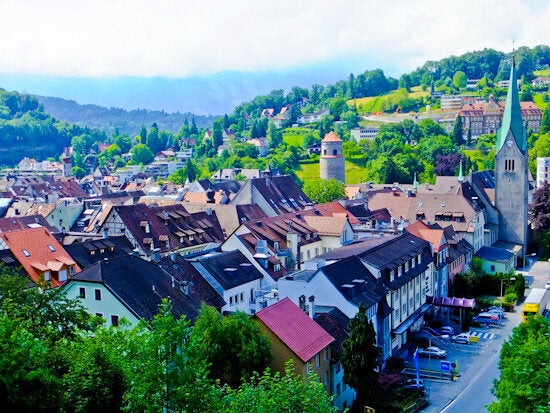
Bregenzerwald
Going East from Bregenz you enter the alpine foothills of the Bregenzerwald, literally the Bregenz forest, as this area was once completely wooded. Nowadays it's rich pasture land, with 22 picturesque villages, and around 30,000 cows. Cheese is big here and very good it is too, but this is not all chocolate box chalets and cowbells. Swiss architect Peter Zumthor has just completed his Werkraum Haus, in Andelsbuch, to showcase the most innovative craftsmen of the area. A huge glass façade seems to remove the boundary between inside and out and the snow-capped mountains jostle for a place in the interior.

The rural atmosphere complements the music of Schubert and every year there's the Schubertiade in Schwarzenburg which includes chamber concerts, song recitals and master classes held in the Angelica Kaufmann Hall. This is a stylish timber-frame building, the wood being particularly suited to the acoustics of chamber music and the windows give idyllic views of the mountain pastures outside. Audiences can go hiking in the mountains in the morning and then let the music sooth their aching muscles in the afternoon and evening.
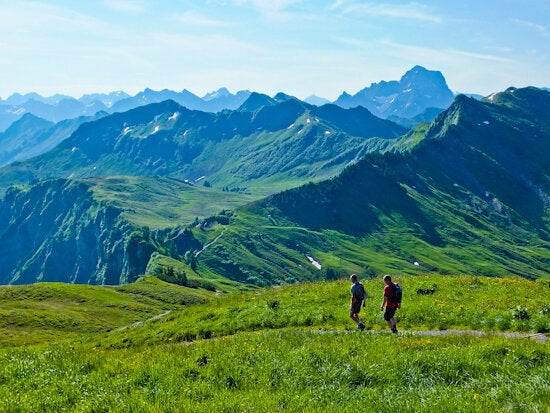
Now it would be remiss of me to go all the way to Austria and not enjoy some glorious mountain hikes and I'm pleasantly surprised to discover that the free Bregenzerwald Guest Card gives unlimited travel on cable cars and buses, as long as you stay 3 nights or more. From Schoppernau, I take the cable car up to Diadamskopf, at 2000m, and enjoy a day's glorious ridge walk, hopping the peaks of Falzer Kopf, Steinmandl and Grunhorn before descending to the village. Fortunately the Guest Card also gives free entry to the swimming pools and, as I soak my weary limbs, I'm already planning my next trip to Vorarlberg - it's meant to be pretty special in the winter too.
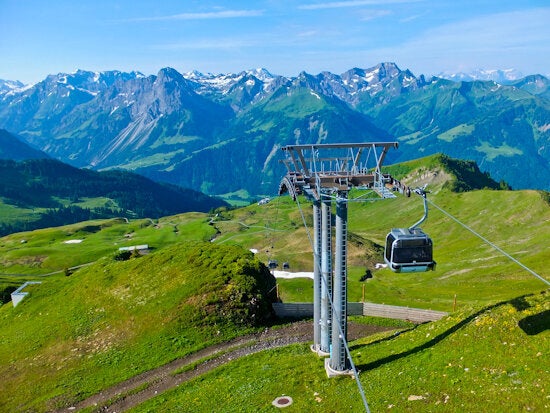
Vorarlberg Travel has information about the state.
Bregenzerwald Tourism has information about the region.
The Austrian National Tourist Office has information about the country.
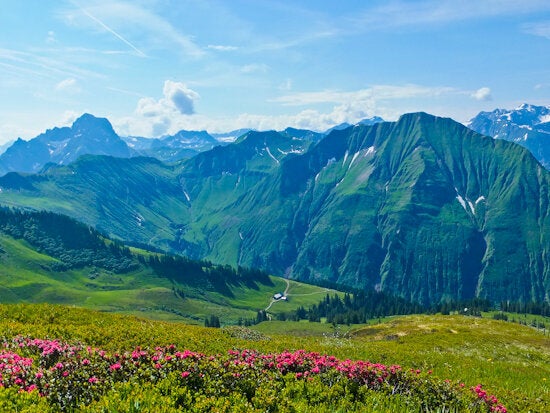
Hotels
Hotel Garni Bodensee is in a central location in Bregenz.
The Bio-Pension Beer, in Schoppernau, makes a comfortable base for exploring the Bregenzerwald.
Restaurants
Restaurant Kornmesser in Bregenz, is in the the old corn exchange and has a nice garden.
Restaurant Rauch in Feldkirch is right in the medieval centre.
Restaurant Gütle in Dornbirn is next tot the Rolls Royce Museum.
Gasthof Hirschen in Schwarzenberg also has rooms
Gasthof Krone in Hittisau also has rooms.
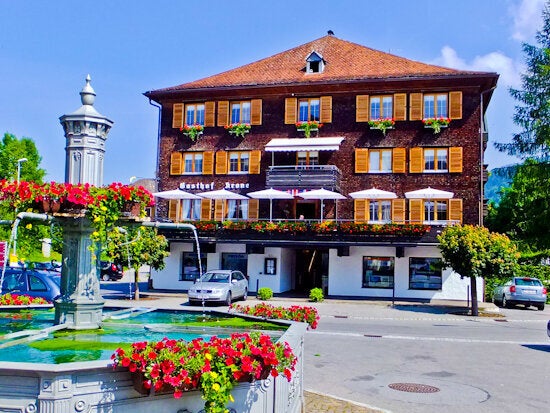
All pictures copyright Rupert Parker